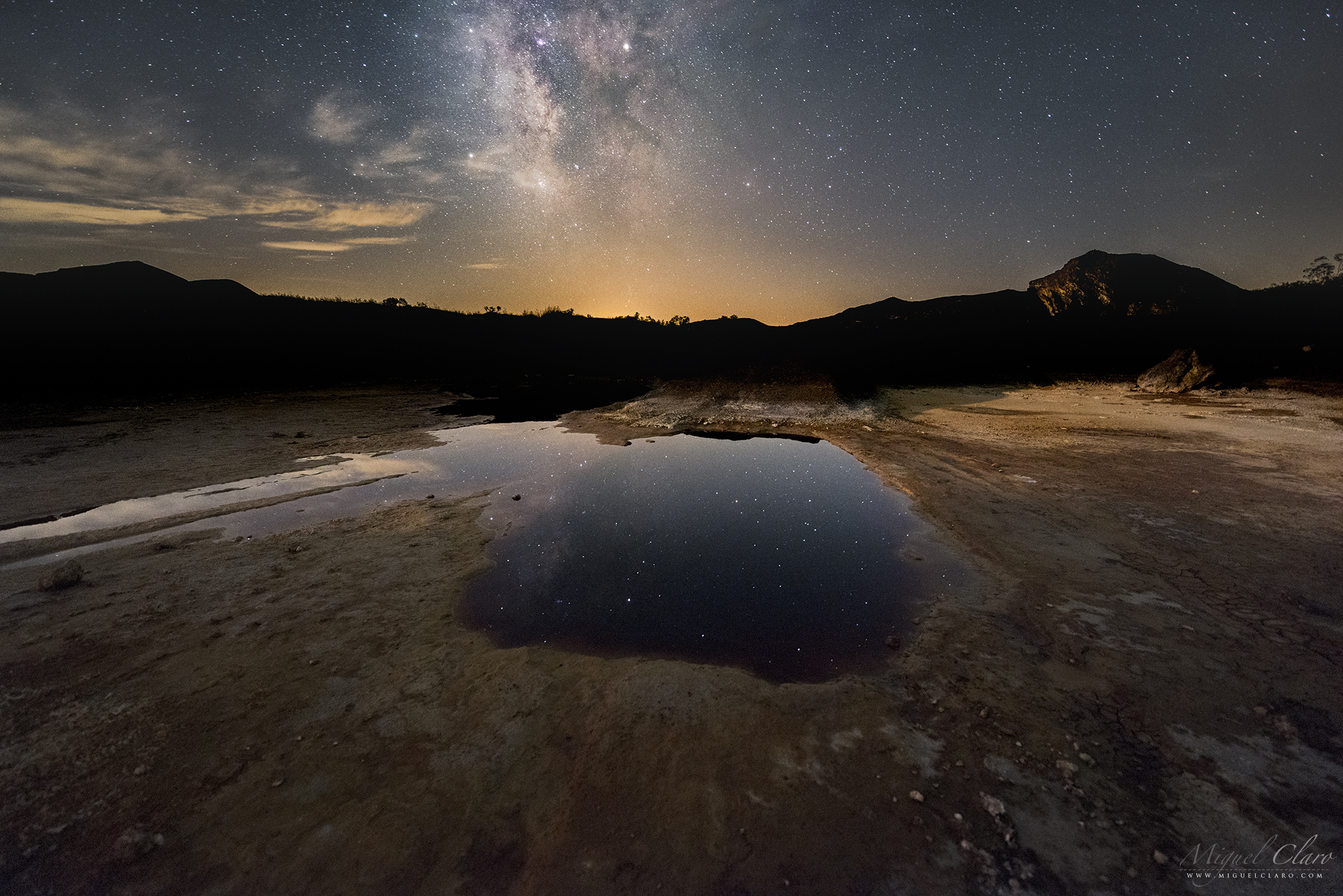Wormhole in the Earth: Reflected Starlight Dazzles in Portuguese Mine (Photo)

Miguel Claro is a Lisbon, Portugal-based professional photographer, author and science communicator who creates spectacular images of the night sky. As a European Southern Observatory photo ambassador, a member of the international astrophotography project The World At Night and the official astrophotographer of the Dark Sky Alqueva Reserve, he specializes in astronomical "skyscapes" that connect Earth and the night sky. Join him here as he takes us through his photograph "Mina de São Domingos, an Open Hole to a Chemical Universe."
In this stunning view of the São Domingos mine in southeast Portugal, starlight reflecting off an open pit looks like a portal to deep space. It seems like we could plunge through a puddle of acid water and into the constellation Scorpius. Overhead, Saturn shines brightly against the core of the Milky Way galaxy.
Throughout history, the São Domingos mine has been a major source of gold, silver, copper and pyrite. Heavy elements present in these minerals were created by the stars billions of years ago, before the Earth or the solar system formed. Stars create elements through nuclear fusion, supernova explosions and even collisions.
Gold, for example, comes from colliding neutron stars, or the stellar corpses left behind when supernovas explode. Silver production occurs in less-massive stars than those that produce gold — and through an entirely different type of nuclear fusion, called the weak r-process. The sites of nuclear creation for some other elements, such as copper, are not really well-known and are continuing topics of observational and computational research. [Supernova Photos: Great Images of Star Explosions]
The areas of heaps, slag and channels of water give the landscape a "lunar" feel. The heaps are composed of different materials with high levels of metals, such as slag and ash, which leach through the rainwater and produce acid mine drainage, usually with an ocher or reddish color.

São Domingos Mine is located in Baixo Alentejo, about 240 kilometers (150 miles) from Lisbon, in the municipality of Mértola, which recently joined the Dark Sky Alqueva Route for the great quality of the night sky. The São Domingos mining area is part of the Iberian Pyrite Belt and is a source of basic metals (like zinc, lead, silver, gold and iron) and other elements, such as sulfur.
It has been a sought-after place for the extraction of ores since antiquity, with evidence of gold, silver and copper mining in the pre-Roman and Roman times. The pyritic deposit of São Domingos (St. Dominic) was explored in various historical periods dating back to the first millennium B.C. (Eastern period) and the Roman Empire. After the Romans, mining at this site ceased until the 1850s, when various European mining companies began extracting copper, gold and silver. The mine closed in 1966, when the reserves were deemed exhausted.
Get the Space.com Newsletter
Breaking space news, the latest updates on rocket launches, skywatching events and more!
Editor's note: If you captured an amazing astronomy photo and would like to share it with Space.com for a story or gallery, send images and comments to spacephotos@space.com.
To see more of Claro's amazing astrophotography, visit his website: miguelclaro.com. Follow us @Spacedotcom, Facebook and Google+. Original article on Space.com.
Join our Space Forums to keep talking space on the latest missions, night sky and more! And if you have a news tip, correction or comment, let us know at: community@space.com.









